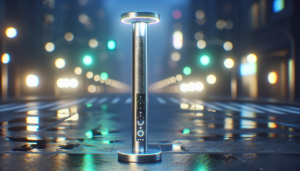Have you ever wondered how 3D printing is reshaping various industries in ways we might not even realize? It’s quite fascinating to think about the capabilities this technology has brought to the table. As I research and learn more about it, I find myself amazed at the innovative applications of 3D printing across different sectors. Let’s take a closer look at how 3D printing is changing the game.
Understanding 3D Printing
3D printing, or additive manufacturing, is the process of creating three-dimensional objects from a digital file. Utilizing various materials and methods, this technology constructs items layer by layer, which allows for a high degree of customization and efficiency. It’s incredible to see how far this technology has come since its inception!
A Brief History of 3D Printing
The journey of 3D printing began in the 1980s with the development of techniques like stereolithography. Since then, advancements have occurred rapidly, making 3D printing tools more accessible and versatile. I often think about how this innovation has grown from being a prototyping tool to a vital component in numerous industries today.
Applications in Healthcare
3D printing has revolutionized healthcare. From creating complex medical devices to bioprinting tissues, the potential seems limitless. These innovations have not only improved patient care but have also added efficiencies to medical manufacturing processes.
Custom Prosthetics and Implants
One of the most remarkable uses of 3D printing in healthcare is the creation of custom prosthetics and implants. Traditional manufacturing methods often result in a one-size-fits-all approach, which can lead to discomfort or ineffectiveness for patients. With 3D printing, I can create tailored solutions that fit each individual perfectly.
| Advantages of 3D Printed Prosthetics |
|---|
| Customization to individual anatomy |
| Reduced production time |
| Lower costs compared to traditional methods |
Bioprinting
Bioprinting is another exciting area where 3D printing is making waves. Scientists are using 3D printing technologies to create bio-structures that mimic human tissues. I can’t help but wonder about the future possibilities, such as organ transplants made from a patient’s cells.
Surgical Models
Surgeons can create accurate models of patients’ anatomy using 3D printing, aiding in pre-operative planning. By having a tangible model in hand, I feel more confident in my surgical approaches, allowing for precision and improved outcomes.
3D Printing in Manufacturing
The manufacturing sector is experiencing a significant transformation thanks to 3D printing. This technology allows for rapid prototyping and custom manufacturing, streamlining production efficiency.
Rapid Prototyping
With 3D printing, I can create prototypes in a matter of hours rather than weeks. This speed not only accelerates the design process but also enables rapid testing and iteration, which is vital for developing successful products.
| Benefits of Rapid Prototyping |
|---|
| Faster iteration cycles |
| Reduced material waste |
| Cost-effective development |
Custom Manufacturing
The era of mass production is evolving into a world of customized goods. 3D printing allows manufacturers to produce small runs of specialized products that cater to niche markets. This agile approach has sparked creativity and innovation in product design.
Tooling
The production of tools often requires lengthy processes and significant upfront investment in manufacturing. 3D printing simplifies this by allowing me to produce high-quality tools quickly and cost-effectively, paving the way for new designs and efficiencies.
The Impact on Automotive Industry
3D printing has proven to be a game changer in the automotive sector. From prototyping car parts to creating intricate models, its influence on this industry is profound.
Lightweight Components
I’m particularly interested in how 3D printing enables the production of lightweight components, which ultimately contributes to fuel efficiency. The combination of this technology with advanced materials measurably enhances performance and reduces environmental impact.
| Use Cases for Lightweight Components |
|---|
| Improved fuel efficiency |
| Enhanced vehicle performance |
| Reduced emissions |
Supply Chain Efficiency
The automotive industry relies heavily on managing complex supply chains. 3D printing allows for on-demand production, reducing the need for large inventories and long lead times. I find it fascinating how quickly manufacturers can respond to market demands using this technology.
Aftermarket Parts
The aftermarket automotive parts market is evolving with 3D printing. I can see how enthusiasts and repair shops can leverage this technology to produce hard-to-find parts, making maintenance more accessible to people.
Construction Industry Innovations
In construction, 3D printing materials are helping to pave the way for more sustainable building practices and innovative designs.
3D Printed Buildings
I can’t help but be excited when I think about the potential of 3D printed houses! Using concrete and other suitable materials, entire structures are printed layer-by-layer. This method significantly reduces labor costs, and time, and can lead to less waste overall.
| Advantages of 3D Printed Buildings |
|---|
| Faster construction times |
| Decreased labor costs |
| Design flexibility and creativity |
Sustainable Materials
Another notable point is the opportunity to use sustainable materials in 3D printing. I can envision houses built using recycled materials, contributing to a circular economy in the construction sector. This is a step toward reducing the environmental impact of building practices.
3D Printing in Aerospace
In the aerospace industry, 3D printing has introduced new possibilities in manufacturing aircraft components and parts.
Lightweight Parts for Fuel Efficiency
As in the automotive sector, 3D printing in aerospace significantly contributes to fuel efficiency through the production of lightweight components. By replacing traditionally manufactured parts with 3D printed ones, the weight of an aircraft can be reduced, leading to lower fuel consumption.
| Benefits of Lightweight Parts in Aerospace |
|---|
| Enhanced fuel efficiency |
| Increased payload capacity |
| Improved overall performance |
Complex Geometries
3D printing enables designers to create complex geometries that were previously impossible to produce using traditional techniques. I often think about how this capability opens the door for innovative designs that enhance aerodynamics and structural integrity.
On-Demand Spare Parts
Aerospace is well-known for its stringent regulations and high costs related to maintenance. With 3D printing, I can see how on-demand production of spare parts could save both time and money, minimizing downtime during repairs.
Fashion and Jewelry Industry
3D printing has also made its mark in the fashion and jewelry sector, merging technology with creativity in unique ways.
Custom Fashion Pieces
I love the idea of fully customized clothing produced through 3D printing! Designers can create bespoke pieces tailored to individual preferences, making fashion more personal and unique. This technology allows for intricate designs that traditional methods may struggle to replicate.
| Advantages of 3D Printing in Fashion |
|---|
| Custom fit and design |
| Reduction in wasted materials |
| Potential for innovative fashion showpieces |
Jewelry Design
Jewelry designers have embraced 3D printing as a way to create intricate designs and patterns that push the boundaries of traditional craftsmanship. With tools at my disposal like CAD software, I appreciate how readily I can bring my creative visions to life.
Education and Training
3D printing has opened new avenues for education and training, providing hands-on experience and real-world applications for students.
Prototyping in Learning
In educational settings, 3D printing allows students to conceptualize and create prototypes of their designs. This hands-on approach fosters creativity and critical thinking, which is essential for a well-rounded education.
| Educational Benefits of 3D Printing |
|---|
| Promotes hands-on learning |
| Encourages creativity and innovation |
| Prepares students for future job markets |
Medical Training
I find it fascinating how medical schools can utilize 3D printed models for student training. These models can replicate anatomical structures, providing valuable experience that is crucial for future healthcare professionals.
Conclusion
3D printing is indeed an innovative technology that has made a significant impact across various industries. As I reflect on all the applications we’ve explored, from healthcare to aerospace and education, it’s evident that the possibilities are endless. I am excited to see how this technology will continue to evolve, offering new solutions and creative approaches to challenges we face.
The future is bright, and with ongoing advancements in 3D printing, I am confident we will witness even more transformative changes in the coming years. Whether it’s enhancing patient care, streamlining production processes, or fostering creativity in fashion, 3D printing is undoubtedly a technology to watch. The innovations it brings not only enhance efficiency but also pave the way for a more sustainable and creative future.






